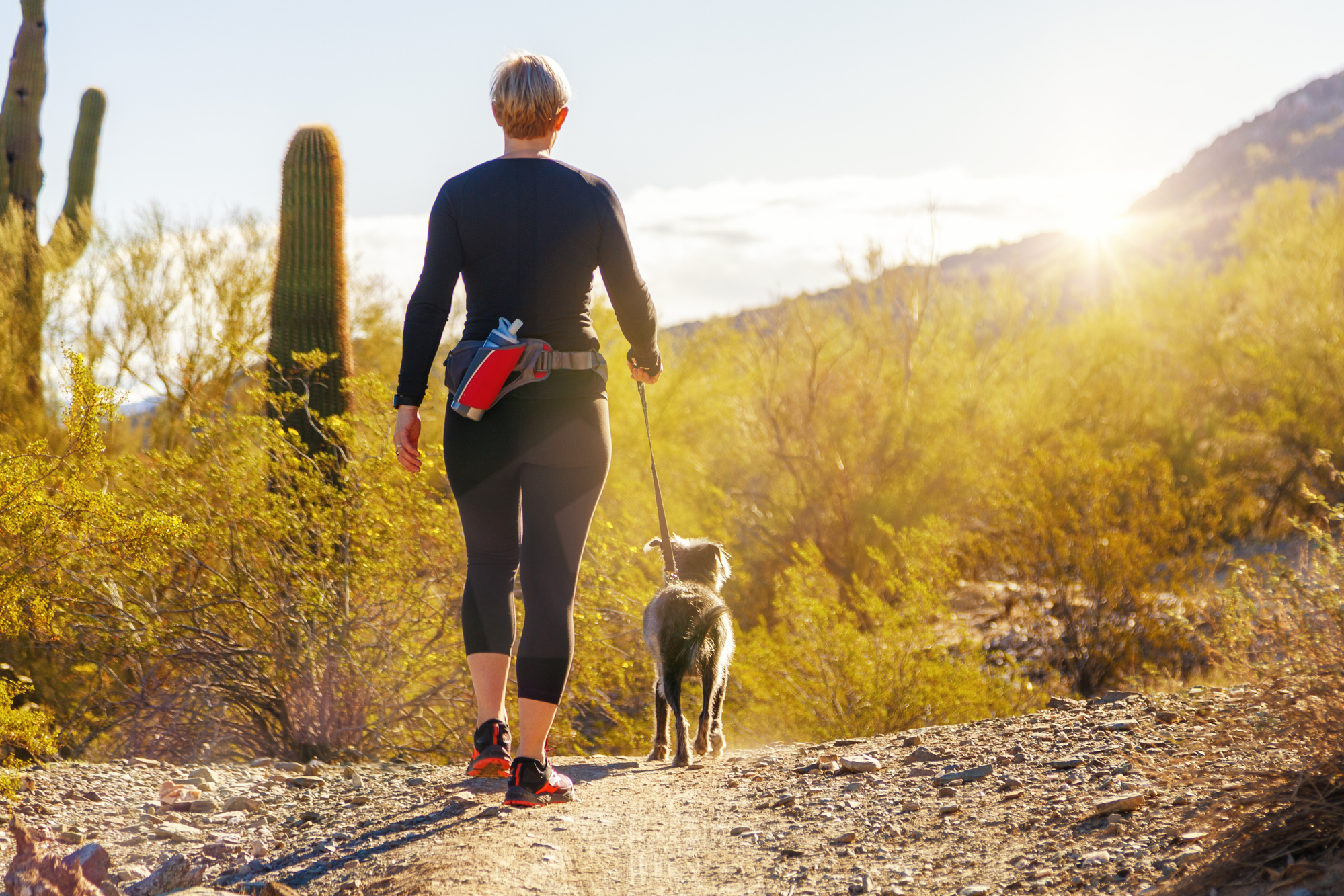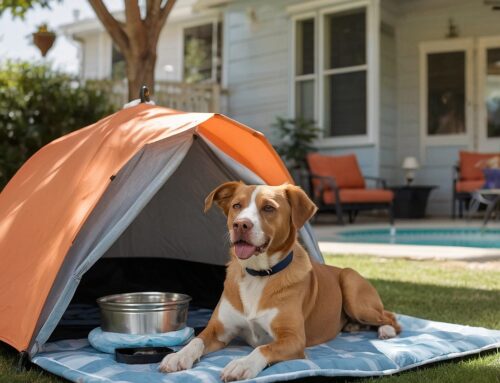Imagine a bright, sunny day, a beautiful trail ahead, and your trusted canine companion at your side. Not only is this a formula for pure pleasure and relaxation, it’s also the perfect opportunity to seal your bond with your dog. But to keep your experience safe for your pup, you need to take a number of important precautions. Here are the preparations and preventative actions necessary for your dog to emerge from your special time together safe and sound.
Fitness and Health
Before giving the idea of taking a hike together further consideration, determine your dog’s level of fitness. If he’s only used to a slow stroll around the block, he is probably not fit enough to accompany you on a vigorous hike. In addition to his current activity level, also consider his age, breed, and temperament. An older or small dog would probably not do well on a trail that is mountainous and steep.
If you determine your dog is a good hiking candidate, he may need some building up for strength and agility. Start by walking in your neighborhood or small trails, gradually adding distance each day until your dog builds stamina and muscle tone and is ready to accompany you on a more challenging route.
Even if you believe your dog is fit enough to handle a tough hike, it can’t hurt to make a visit to your vet to get a final “thumbs-up.” Plus, this is a good opportunity to make sure he is up to date with all vaccinations. You might also ask about any important medications, such as the proper doses of antihistamines, should your dog have a serious allergic reaction while on the trail.
If you don’t already have him on flea, tick, and heart-worm medication, now would be a good time to either purchase these online or from your vet. Forest and field areas are rife with ticks and other harmful parasites. If you are planning to hike on trails where snakes are known to be, ask your vet about purchasing a snake bite kit.
Finding the Best Trails
Finding the best trails for you and your dog takes some time and effort, because not all trails are dog-friendly, especially those in national and state parks. You can start your research on the Internet, but because rules and regulations about dogs change rapidly, be sure to call to verify whether they are dog friendly. In addition, be sure to ask if dogs are required to be on leash. Leashed dogs will promote more safety.
Preparing for the Hike
How much you need depends on how long you are planning to be gone, but you’ll need at least the following items for your dog:
- Water
- Small, preferably collapsible, bowl
- Identification tags
- Strong, preferably leather, leash
- Food
- Treats
- First aid kit
- Blanket
- Sunscreen and bug spray for dogs
- Waste bags
Besides making sure you have everything you need, watch the weather forecast. Hiking during a heat wave is not good for either you or your dog. Likewise, rain and stormy weather can cause trails to become slippery, and therefore, dangerous. If you do decide to go during hot weather, be sure you bring along plenty of water.
On the Trail
When your trail day arrives, feed your dog one hour before starting out, and nothing else after his meal until you dole out treats while hiking. In warm weather, heatstroke is a real concern, so take frequent breaks, and if you can find shade to take them in, all the better. Offer water and a few treats during the breaks. If your dog start panting, stop and give him some more water. On especially hot days, consider resting during the hottest part of the day.
Even if leashes are not required, it’s a good idea to keep your dog leashed, especially if he will not normally stay by your side. This is important for several reasons, including:
- Reduces chance he can get lost
- Shows respect for other hikers
- Keeps him safe from predators
- Lessens the chance of picking up ticks or other harmful parasites
- Lowers his likelihood of encountering one of the three toxic plants: poison ivy, sumac, and poison oak
Keep him away from both drinking or swimming in any water you may come across. Lakes, streams, and any kind of standing water can cause gastrointestinal illness or even worse. Water in the wild in any form is loaded with parasites and algae, which is the main reason it is so important to bring enough water for you both to stay hydrated.
Be a Respectful Hiker
Just imagine hiking along when you suddenly feel something squish under your foot. Show respect for your fellow hikers and dispose of your dog’s poop in a bag and bury it at least 200 feet away from the trail or any camping areas. The best thing you can do for the environment is to purchase biodegradable bags, which will disintegrate after you bury them.
Another important consideration is to pick up your litter and either place it in a designated receptacle or take it off the trail with you when you leave and dispose of it in an environmentally safe receptacle.
Training Your Dog
It is important to have a well-trained dog when you are on the trail together. He should know the basic commands such as sit, down, stay, off and drop it. However, the most important command is the recall. If his collar slips off or you let go of his lead, he needs to respond and return to you when you call him back. The command used most often is “come,” but if you use something else, be consistent. Whatever command you use, he needs to respond and return to you immediately.
If you need help with training, consider contacting Performance K9 Training where top-notch trainer, David Greene can help. David has represented the USA on 4 world teams with his dogs and is renowned for his ability to train even the most difficult dogs. His unique approach is to design a unique plan to address your dog’s temperament and ability.
Hiking with your dog is a truly special experience as long as you take proper care and precautions to ensure a safe time together.
Sources








